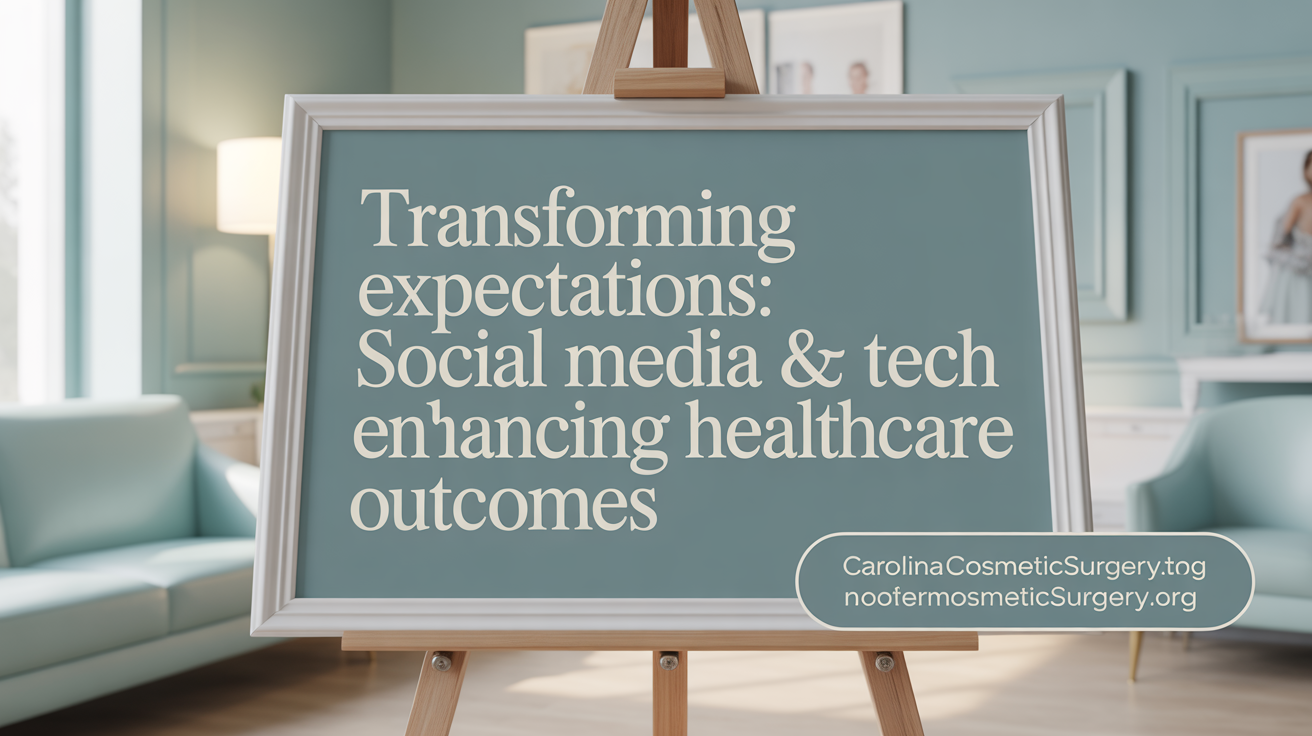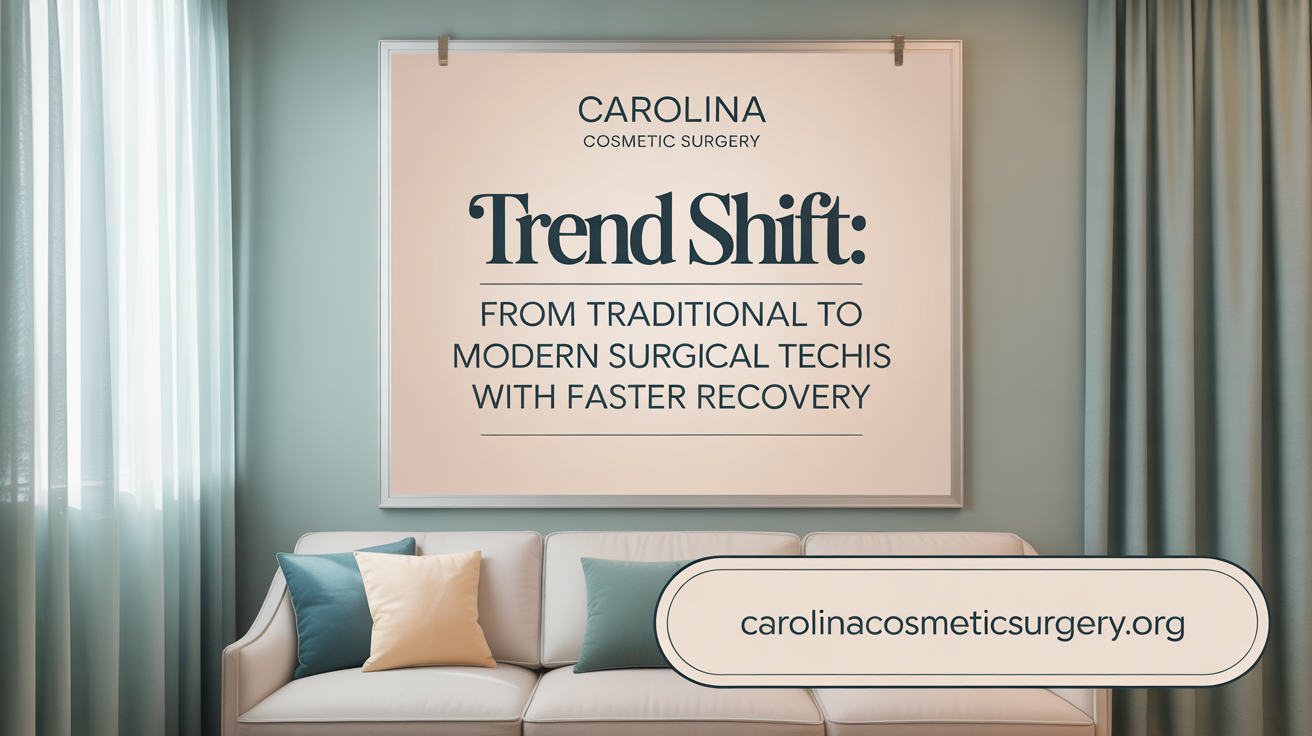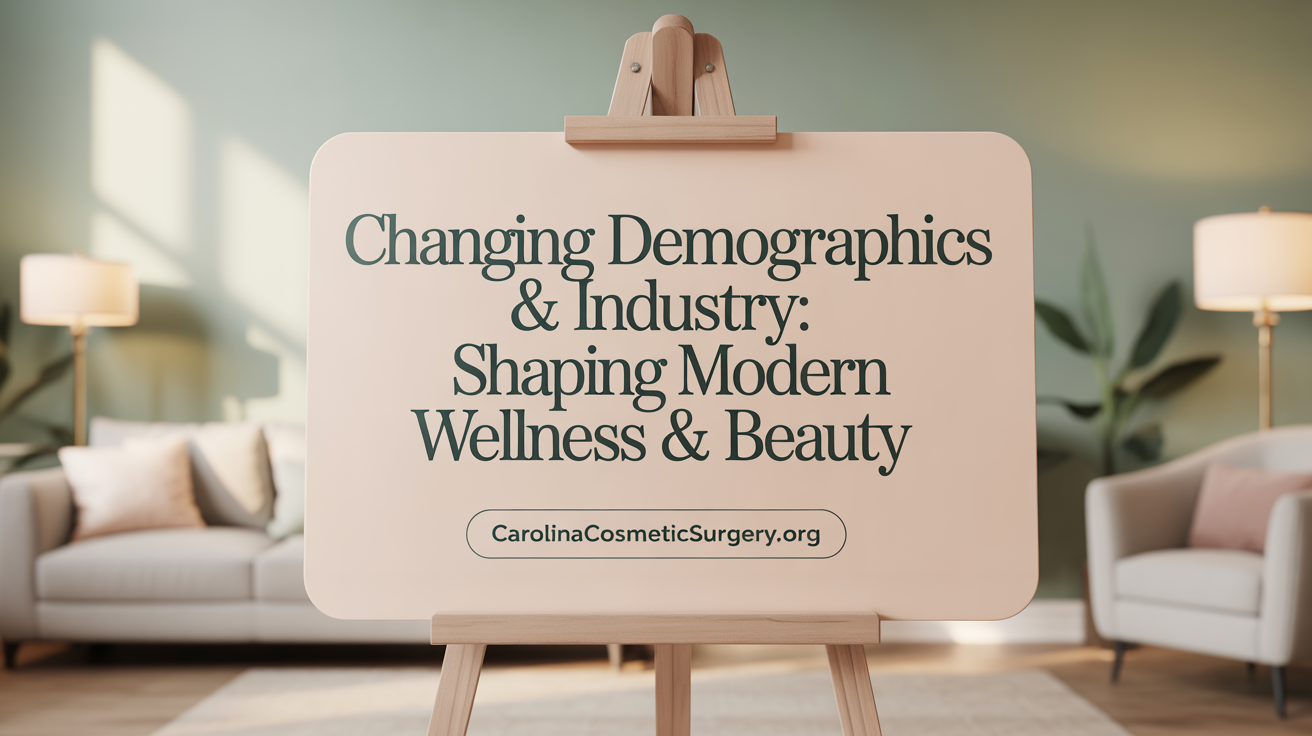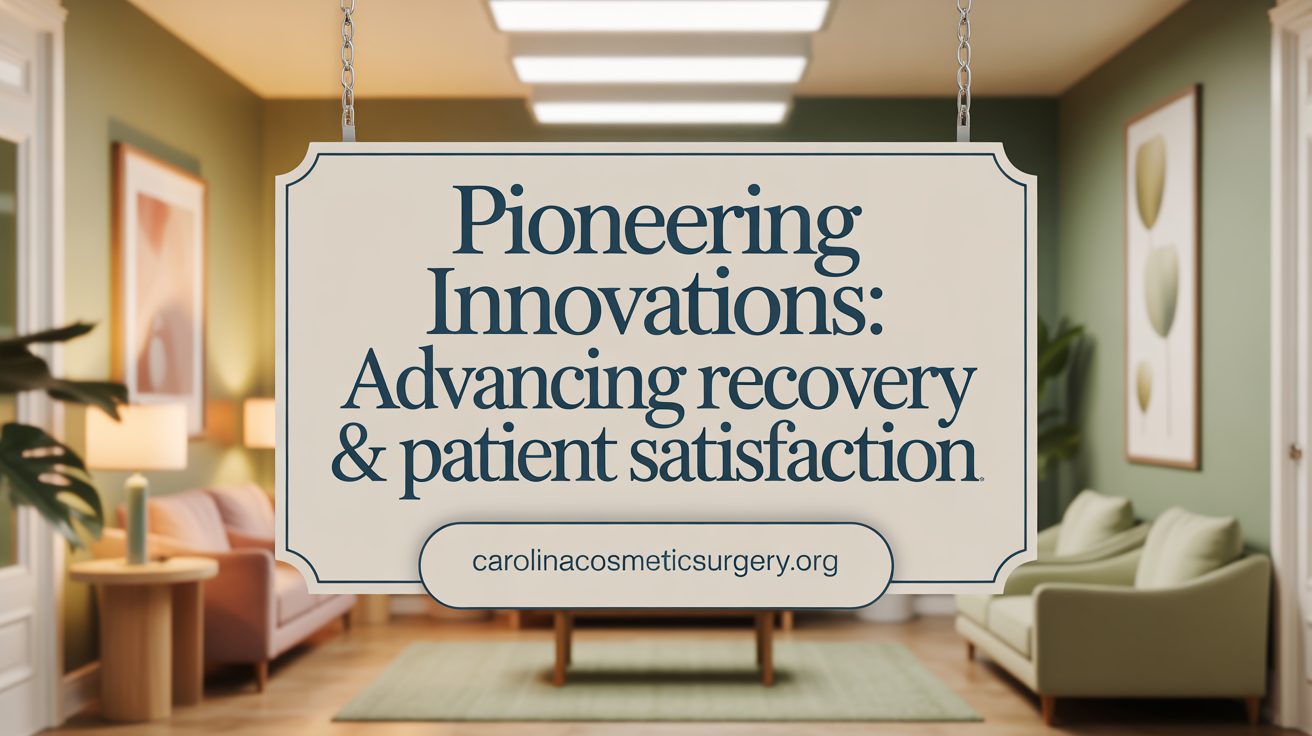Understanding Modern Cosmetic Surgery Recovery and Patient Mindsets
In recent years, the landscape of cosmetic surgery has undergone significant transformation, shaped by evolving patient expectations, technological breakthroughs, and shifting cultural attitudes towards beauty. Recovery times are shortening thanks to minimally invasive techniques, while patients are increasingly seeking natural and personalized results. This article explores the latest trends in cosmetic surgery recovery periods, how patient expectations have changed, and what innovations are driving these developments. We also look at demographic influences and the future outlook for this dynamic field.
Trends in Recovery Times: Faster Healing Through Innovation and Minimally Invasive Techniques

What are the current trends in cosmetic surgery recovery times?
In 2024, recovery durations after cosmetic procedures are becoming noticeably shorter, driven by technological innovations and refined surgical methods. Surgeons increasingly prefer minimally invasive techniques, which allow patients to heal faster and return to daily activities sooner. For example, treatments such as Botox, dermal fillers, and laser skin tightening now typically require little to no downtime, making them popular choices for those seeking quick results.
Major surgical procedures like liposuction, tummy tucks, and facelifts are also seeing reduced recovery times, thanks to advanced instruments and improved techniques. In particular, technologies like laser-assisted liposuction (e.g., VASERlipo) and mini facelifts facilitate less trauma to surrounding tissues, promoting quicker healing.
The use of innovative skin tightening devices that utilize radiofrequency and ultrasound further accelerates recovery by minimizing swelling and bruising. These advancements not only shorten downtime but also improve comfort and safety for patients.
One of the most notable developments is the rise of regenerative medicine, including stem cell therapy, which promotes faster tissue healing and enhances results. Coupled with computer-assisted imaging for precise, personalized treatments, these technological Progressions make recovery more predictable and less invasive.
Overall, the shift towards natural aesthetics combined with less invasive approaches reflects a broader industry focus on delivering safe, efficient, and faster healing experiences for patients. This trend supports greater accessibility and patient satisfaction, enabling more individuals to undergo cosmetic procedures with minimal disruption to their lives.
Evolving Patient Expectations: From Dramatic Changes to Natural Enhancement
How have patient expectations in cosmetic surgery changed over time?
Patient expectations in cosmetic surgery have shifted considerably in recent years. There is now a growing preference for results that appear natural and subtle, moving away from the overdone, exaggerated appearances that were once common. Patients increasingly desire enhancements that improve their features while maintaining their authentic look.
One major factor influencing these changes is the rise in access to online information and social media. Today, about 94.1% of prospective patients research procedures online before consulting with a surgeon. This widespread access to information helps patients understand what is possible but also exposes them to varying content quality.
While some surgeons see online content as a helpful tool for setting realistic expectations, others highlight its role in spreading misleading or overly dramatic images. Over recent years, there has been concern that misinformation can lead to unrealistic patient desires and dissatisfaction.
Patients now prioritize quicker recovery times and minimally invasive procedures that require less downtime. Techniques like Botox, dermal fillers, laser treatments, and mini facelifts have become more popular because they offer subtle improvements with minimal recovery. This shift reflects broader societal trends valuing efficiency, convenience, and natural results.
In addition to aesthetic goals, there is an increased emphasis on personalized, culturally sensitive care. Patients want treatments tailored to their individual features, skin types, and lifestyles. The recognition of diversity and inclusivity has become integral in developing treatment plans.
Psychological wellbeing has also gained importance in recent years. Surgeons and clinics now pay closer attention to factors like body dysmorphic disorder and unrealistic expectations, which can influence satisfaction and outcomes. These insights lead to more holistic screening and patient counseling.
In summary, the landscape of cosmetic surgery today is characterized by a shift toward natural, personalized outcomes, driven by technological advances, social media influences, and greater awareness of diversity. As the industry continues to evolve, transparent communication, accurate information, and realistic goal-setting remain central in meeting the changing expectations of patients.
Social Media and Technological Innovations: Dual Forces Shaping Recovery and Expectations

How has social media influenced patient perceptions of cosmetic surgery?
Social media platforms like Instagram, TikTok, and Snapchat have dramatically impacted how patients perceive beauty standards and cosmetic procedures. These platforms showcase idealized, often digitally enhanced images that set unrealistic expectations for appearance. As a result, many individuals experience heightened body dissatisfaction and social appearance anxiety, which fuels the desire for cosmetic enhancements.
Furthermore, the visibility of influencers and celebrities endorsing various procedures can create a perceived norm that influences more people to seek surgical or non-surgical solutions. Patients are increasingly aware of innovative treatments and expect fast, natural-looking results. This trend emphasizes the need for surgeons to manage expectations carefully using visual aids like digital imaging.
What role do technological tools play in improving surgical outcomes and recovery?
Advances in technology have greatly enhanced the precision of cosmetic surgeries and minimized recovery times. Digital imaging systems allow surgeons and patients to visualize expected outcomes before procedures, improving communication and satisfaction.
Procedures like minimally invasive Botox, dermal fillers, and laser treatments now offer results with little to no downtime. Technologies such as Renuvion and Aveli optimize skin tightening with quicker recovery, while high-definition liposculpture permits precise body contouring. These innovations contribute to safer surgeries with reduced risks, scarring, and swelling.
New regenerative medicine techniques, including stem cell therapy, are also emerging to promote faster healing and tissue regeneration, especially in reconstructive surgeries. These state-of-the-art tools ensure high-quality outcomes and shorter recovery periods, aligning with patient desires for natural results.
What ethical and psychological issues are associated with these trends?
The pervasive influence of social media raises ethical concerns about promoting unrealistic beauty standards that may lead to body dysmorphic disorder or anxiety. There is a risk of encouraging unnecessary procedures driven by social pressures rather than genuine aesthetic concerns.
Psychologically, patients might develop distorted perceptions of their body image, which could result in dissatisfaction even after surgery. Surgeons must navigate these issues ethically by screening for psychological vulnerabilities and setting realistic expectations.
How is digital imaging used to enhance patient communication?
Digital imaging has become an essential tool in cosmetic surgery consultations. Virtual simulations enable surgeons to showcase potential outcomes, helping patients understand what to expect from their procedures. This visual communication improves patient satisfaction and reduces the likelihood of revision surgeries.
By customizing treatment plans based on individual facial structure, skin type, and personal goals, surgeons can better meet patient expectations while promoting safety and transparency. This technology also supports the trend toward personalized treatments, aligning surgical results with patient desires.
| Aspect | Impact | Details |
|---|---|---|
| Social Media Influence | Shapes Expectations | Alters beauty standards, increases demand |
| Diagnostic Technology | Enhances Outcomes | Digital imaging, regenerative medicine, advanced laser tools |
| Ethical Concerns | Promotes realistic safety | Screening, regulations, managing societal pressures |
| Patient Satisfaction | Improved communication | Virtual simulations, personalized treatment plans |
As the landscape of cosmetic surgery continues to evolve, embracing these technological advancements while addressing ethical considerations will be crucial to ensuring positive outcomes and maintaining patient trust.
Shifting Popular Procedures and Their Impact on Recovery Timelines

How have the types of popular cosmetic procedures and their recovery timelines changed?
The landscape of cosmetic procedures has evolved significantly over recent years. There is now a clear trend toward minimally invasive treatments like neurotoxins (e.g., BOTOX), dermal fillers, and laser therapies. These options provide natural-looking results with minimal downtime, appealing to patients seeking quick recovery and subtle enhancements.
Traditional surgical procedures such as rhinoplasty, facelifts, and eyelid surgeries remain popular but are increasingly being performed with techniques designed to reduce recovery periods. For example, mini facelifts and micro-liposuction methods like VASERlipo are favored for their shorter healing times.
Advances in technology have also facilitated skin tightening treatments, such as Renuvion and Aveli, which promise effective results with less recovery time than older methods. The focus on recovery is further supported by the rise in combined procedures, allowing multiple concerns to be addressed simultaneously while minimizing overall downtime.
Recovery times vary depending on the type of procedure and individual patient factors. For instance, non-invasive treatments like Botox and fillers typically require only a few days to recover, making them ideal for busy lifestyles. Conversely, more invasive surgeries like tummy tucks or traditional facelifts may still need several weeks of healing, but these are becoming less common as new minimally invasive options emerge.
Younger patients tend to experience quicker recoveries, often returning to work or normal activities within days, whereas older individuals or those with health considerations might take longer. The integration of advanced surgical methods and the development of less invasive procedures are making it possible for everyone to enjoy better results and faster recovery timelines.
Overall, the trend towards less invasive treatments aligns with patient preferences for natural aesthetics, safety, and quicker return to daily life, resulting in a broad range of options that now accommodate diverse recovery needs.
Demographic and Industry Shifts Influencing Recovery and Patient Perspectives

What demographic and industry shifts are influencing recovery experiences and patient perspectives in cosmetic surgery?
The landscape of cosmetic surgery is changing rapidly, shaped by diverse demographic and industry transformations. Younger patients, especially those under 34, are increasingly opting for procedures like rhinoplasty, non-surgical treatments, and body contouring, reflecting a desire for subtle, natural enhancements that fit their lifestyle.
Men are also becoming more active participants in cosmetic procedures, expanding the traditional demographic and encouraging more gender-balanced options. This trend introduces new expectations around recovery, with men often seeking quick and discreet procedures that minimize downtime.
Cultural diversity is another critical factor, prompting surgeons to tailor treatments to varied skin types and aesthetic preferences. Personalization has become essential, with a focus on creating individualized plans that respect cultural beauty ideals.
The industry is embracing minimally invasive techniques, such as Botox, dermal fillers, laser skin tightening, and regenerative medicine, which often require shorter recovery times. Advancements like 3D imaging and AI-driven virtual simulations help patients visualize outcomes, setting realistic expectations and enhancing satisfaction.
Societal acceptance of natural beauty and the influence of social media trends favor subtle, authentic results over dramatic, exaggerated changes. Patients now prioritize safety, high-quality implants like Motiva, and long-term, reliable outcomes.
Enhanced recovery protocols, including less invasive procedures, are reducing healing times, swelling, and bruising, further improving the patient experience. Comprehensive pre- and post-operative education ensures patients understand recovery timelines, potential risks, and necessary care routines.
These demographic and industry shifts have created a more inclusive, personalized, and safety-conscious environment in cosmetic surgery. Patients are empowered with better information, more options, and a focus on aesthetic health that aligns with their individual identities and goals.
The Future of Cosmetic Surgery Recovery and Patient Education

What is the future outlook for cosmetic surgery recovery and patient satisfaction?
The outlook for recovery and satisfaction in cosmetic surgery is very positive and continues to improve. Innovations in technology are making procedures less invasive, which leads to faster recovery times and more natural results. Procedures like Botox, fillers, and laser treatments are expected to grow in popularity because they offer quick, effective results with minimal downtime.
Surgeons are increasingly using advanced tools such as 3D imaging and artificial intelligence to create personalized treatment plans. These tools help patients visualize potential outcomes and understand what to expect, leading to higher satisfaction.
Moreover, there is a trend toward natural-looking enhancements that preserve individual features, supporting body positivity and confidence. This approach resonates with patients seeking subtle improvements rather than dramatic changes.
By focusing on safety, high-quality materials like Motiva Implants, and compassionate care, the industry aims to improve recovery experiences and ensure long-term satisfaction. Overall, continuous progress in technology and patient-centered approaches promises a future where cosmetic procedures are safer, more effective, and more aligned with individual goals.
Navigating Cosmetic Surgery Recovery and Expectations in an Evolving Landscape
As cosmetic surgery continues to advance, the trends toward minimally invasive procedures, faster recovery times, and a preference for natural, personalized results are reshaping patient experiences and outcomes. Social media and technological progress play pivotal roles in influencing patient expectations, necessitating clear communication and education to prevent misunderstandings. Demographic shifts and emerging procedures further diversify the field, making tailored care and safety paramount. Looking ahead, innovations in regenerative medicine and digital planning promise even greater improvements in recovery and satisfaction. For patients, informed decisions grounded in education and realistic expectations remain the cornerstone of achieving the best possible cosmetic surgery experience.
References
- Evolving Patient Expectations: The Future of Plastic Surgery
- 2024 Plastic Surgery Trends
- 2021 Statistics & Trends Released - Demand for Facial Plastic ...
- Is Cosmetic Surgery the Right Path for You? - Asthetica
- The Latest Trends in Plastic Surgery - Christopher Johnson MD
- The Biggest Plastic Surgery Trends of 2024
- Cosmetic surgery - Mayo Clinic
- The Truth About Recovery Times in Plastic Surgery - Dr. Alspaugh
